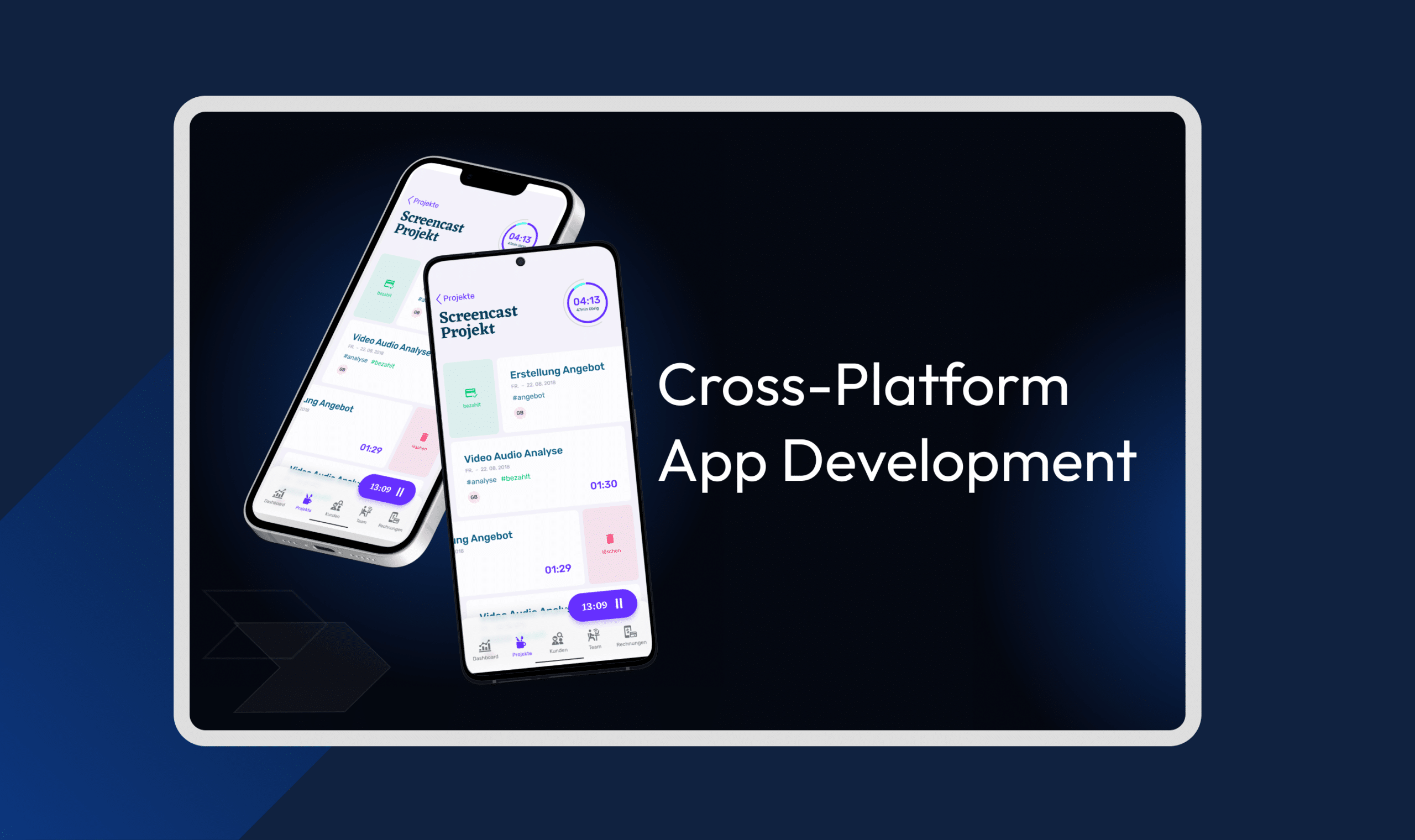
Building a mobile app that works seamlessly across multiple platforms is no longer a luxury—it’s a necessity. With users spread across iOS, Android, and other devices, businesses need to deliver consistent, high-quality experiences without the hassle of maintaining separate codebases for each platform. That’s where cross-platform mobile development comes in.
Cross-platform development allows you to create apps that run smoothly on different operating systems while saving time, effort, and resources. But here’s the catch: building a successful cross-platform app isn’t just about writing code that works everywhere. It’s about following best practices that ensure your app is performant, user-friendly, and scalable.
In this blog, we’ll explore the best practices for cross-platform mobile development, helping you create apps that not only meet but exceed user expectations.
Why Cross-Platform Development Matters
Before we dive into the best practices, let’s quickly understand why cross-platform development is a game-changer for businesses:
- Cost-Effectiveness: Developing a single app that works on multiple platforms reduces development costs significantly.
- Faster Time-to-Market: With shared codebases, you can launch your app faster across platforms.
- Consistent User Experience: A unified codebase ensures a consistent look and feel across devices.
- Easier Maintenance: Updating and maintaining one codebase is simpler than managing separate ones for each platform.
Now that we’ve established the importance of cross-platform development, let’s explore the best practices to ensure your app’s success.
1. Choose the Right Framework
The foundation of any cross-platform app is the framework you choose. Picking the right one can make or break your project. Here are some popular frameworks to consider:
- Flutter: Developed by Google, Flutter is known for its fast performance and beautiful UI components. It uses the Dart programming language and offers a rich set of pre-designed widgets.
- React Native: Backed by Facebook, React Native allows you to build apps using JavaScript and React. It’s highly popular due to its large community and extensive library support.
- Xamarin: Owned by Microsoft, Xamarin uses C# and .NET to build apps. It’s a great choice if you’re already working in the Microsoft ecosystem.
- Ionic: Built on top of Angular, Ionic is ideal for web developers looking to transition into mobile app development.
When choosing a framework, consider factors like performance, community support, ease of learning, and compatibility with your team’s skill set.
2. Prioritize Performance Optimization
One of the biggest challenges in cross-platform development is ensuring optimal performance across all devices. Here’s how you can tackle this:
- Minimize Native Dependencies: While cross-platform frameworks allow you to write code once, relying too much on native modules can slow down your app. Use native code only when absolutely necessary.
- Optimize Images and Assets: Compress images and use vector graphics wherever possible to reduce load times.
- Lazy Loading: Load only the necessary components when the user needs them. This improves initial load times and reduces memory usage.
- Test on Real Devices: Emulators are great, but nothing beats testing on actual devices to identify performance bottlenecks.
3. Design for Consistency and Adaptability
A great user experience is key to the success of any app. When developing cross-platform apps, it’s essential to maintain consistency while adapting to platform-specific guidelines.
- Follow Platform-Specific Guidelines: iOS and Android have their own design languages—Material Design for Android and Human Interface Guidelines for iOS. Adhere to these guidelines to ensure your app feels native to each platform.
- Use Responsive Design: Ensure your app’s layout adapts seamlessly to different screen sizes and orientations.
- Consistent Branding: While adapting to platform-specific designs, maintain consistent branding elements like colors, fonts, and logos.
4. Write Clean and Modular Code
Cross-platform development often involves working with shared codebases. Writing clean, modular, and reusable code is crucial for long-term maintainability.
- Follow DRY (Don’t Repeat Yourself) Principle: Avoid duplicating code by creating reusable components and functions.
- Use Version Control: Tools like Git help you track changes and collaborate effectively with your team.
- Document Your Code: Proper documentation ensures that anyone working on the project can understand and modify the code easily.
5. Leverage Cloud Services and APIs
Integrating cloud services and APIs can enhance your app’s functionality and scalability.
- Backend-as-a-Service (BaaS): Platforms like Firebase and AWS Amplify provide ready-to-use backend services, reducing development time.
- Third-Party APIs: Use APIs for features like payment gateways, social media integration, and analytics.
- Offline Support: Implement offline capabilities using local storage and sync data with the cloud when the device is online.
6. Focus on Security
Security is a critical aspect of mobile app development. Here’s how you can safeguard your cross-platform app:
- Data Encryption: Encrypt sensitive data both in transit and at rest.
- Secure Authentication: Implement secure authentication methods like OAuth, biometrics, or two-factor authentication.
- Regular Updates: Keep your app and its dependencies updated to patch vulnerabilities.
7. Test Thoroughly
Testing is a non-negotiable step in cross-platform development. Since your app will run on multiple devices and operating systems, thorough testing is essential to ensure a bug-free experience.
- Automated Testing: Use tools like Appium or Detox for automated testing across platforms.
- Manual Testing: Don’t rely solely on automation. Manual testing helps catch subtle UI/UX issues.
- Beta Testing: Release your app to a small group of users to gather feedback and identify issues before the official launch.
8. Plan for Scalability
Your app might start small, but as your user base grows, it should be able to handle increased traffic and feature additions.
- Modular Architecture: Design your app with scalability in mind. Use microservices or modular architecture to make it easier to add new features.
- Database Optimization: Choose a database that can scale with your app, such as Firebase Realtime Database or MongoDB.
- Load Testing: Simulate high traffic to ensure your app can handle the load without crashing.
9. Monitor and Improve
Launching your app is just the beginning. Continuous monitoring and improvement are key to keeping your users engaged.
- Analytics: Use tools like Google Analytics or Mixpanel to track user behavior and identify areas for improvement.
- User Feedback: Listen to your users and address their concerns through regular updates.
- Performance Monitoring: Tools like Sentry or New Relic can help you monitor your app’s performance in real-time.
Conclusion
Cross-platform mobile development is a powerful approach to building apps that reach a wider audience without breaking the bank. By following these best practices—choosing the right framework, optimizing performance, designing for consistency, writing clean code, leveraging cloud services, focusing on security, testing thoroughly, planning for scalability, and monitoring post-launch—you can create apps that not only meet but exceed user expectations.
At Amazatic, we specialize in building high-performance cross-platform mobile and web applications that deliver seamless experiences across devices. Whether you need a scalable mobile app or a responsive web solution, our expert team ensures top-notch design, security, and functionality. We leverage cutting-edge frameworks to create apps that are efficient, user-friendly, and built for long-term success.
Explore our cross-platform app development services here: Amazatic Mobile & Web App Development

